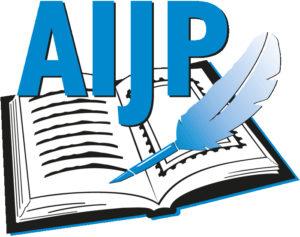It was obvious to choose a framework theme adapted to the host country for the presentation of the current Yearbook of the European Academy of Philately (AEP) at the FIP World Exhibition HELVETIA in Lugano from 18-22 May 2022: Switzerland.
Most of the 22 contributions – seven nations are involved, including Japan – come from Swiss collectors. President Jean Voruz opens the round and introduces two eminent Lausanne philatelists from the 19th century: Axel de Reuterskiöld and Paul Mirabaud. Lausanne comes into focus one more time: the city hosted the peace conference after the Greek-Turkish War in 1922/23. Arnold Ottonin reports on the event. Guy Coutant uses Swiss stamps to trace the history of the country from its beginnings to the end of the Thirty Years’ War, while Fabien Barnier presents the Swiss mountains and lakes through the large-format issues of 1914-1931. The Standing Helvetia series should not be missing from such a presentation: Pascal Schneider takes a close look at it in regard to a plate reconstruction, and is thematically complemented by Pierre Guinand, who deals in detail with its plate defect HELVETTA. Roberto Lopez has chosen a delightful theme of marcophily and examines the dates of use of the so-called dwarf stamps.
Several contributions deal with postal connections from Switzerland to other parts of the world. Three of them concentrate on transatlantic mail via German ports or Ostend to the USA (James Van der Linden, Paul Wijnants and Robert Lisbeth), while another three (Lorenzo Carra, Emilio Simonazzi and Vittorio Morani) shed light on mail from the old Italian states of Modena and Tuscany to the Swiss Confederation. Jean Voruz deciphers the fees of an unusual parcel bulletin card to China, and Charles Bruart traces the path of a returned military letter from Switzerland-Belgium-Switzerland. One can only marvel at the extremely rare covers that Takashi Yoshida is able to present: Items from Japan to Switzerland between 1860 and 1875, when his country had just overcome a long period of complete isolation. Hardly less exotic is the correspondence between Héli Chatelain, who worked as a linguist and missionary in Angola, and his mother and sister in Switzerland, which Luis Frazão comments on with great skill and knowledge.
Douglas N. Muir has specialised in a rather unusual topic: he shows a selection of covers with a wide variety of Swiss postal RETOUR labels used in Liechtenstein. Laurent Bonnefoy’s choice is hardly less eclectic: he is interested in postal exchanges in the Jura border area from 1800 onwards. Bernard Lachat undertakes a tour d’horizon of private Swiss franking machines from 1923 to the present day.
The Yearbook offers a colourful mix of contributions on postal history and traditional philately; often the essays share insights gained from years of intensive research. On the one hand, the selection is an excellent showcase for Switzerland’s multifaceted philately, which may tempt one or the other to enter this delightful field of collecting themselves. On the other hand, the diversity reflects the wide-ranging fields of interest of eminent philatelists who contribute their expertise to the European Academy of Philately (AEP). Like the content, the numerous illustrations of the often very rare covers are of the highest quality. – Editing and layout were once again entrusted to Dr Guy Coutant, who carried out his task with proven reliability and efficiency. With this Yearbook, the AEP can yet again redeem its guarantee of high performance and quality.
Rainer von Scharpen, AIJP
Académie Européenne de Philatélie, OPUS XXII. La Suisse. Switzerland. 2022, A-4, 228 pages, colour ill., softcover. Price: 50 € incl. s/h. ISBN 9-789464-5138-13. Orders to: Patrick Maselis. E-mail: info@maselis.be

